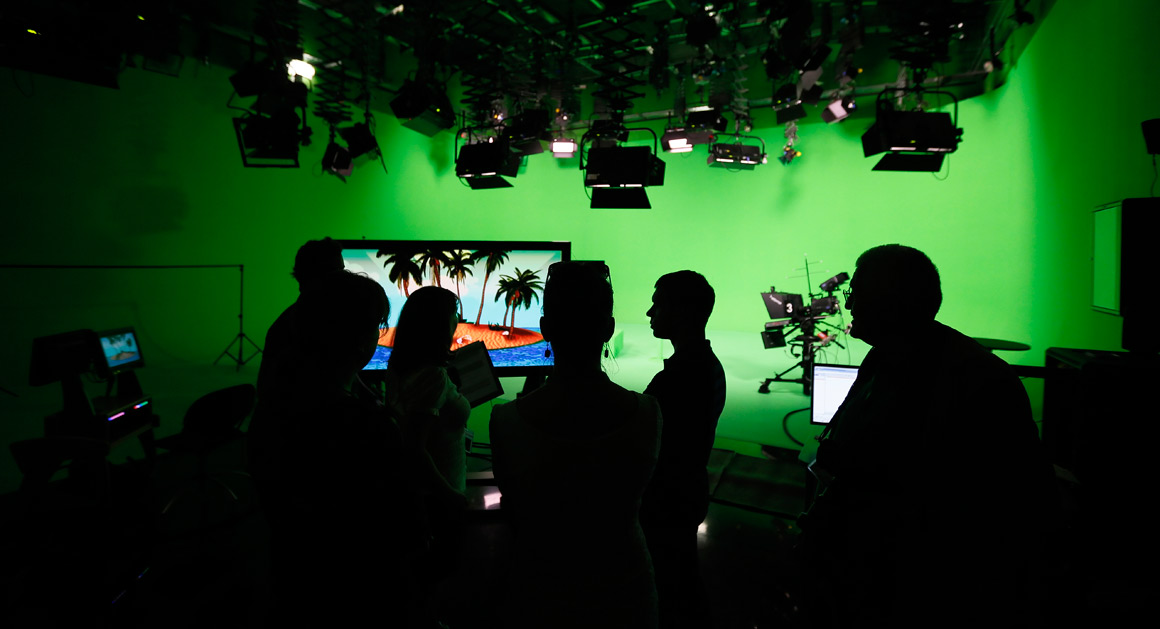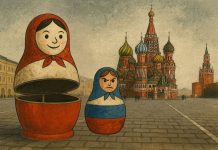
By pretending to be real news, RT is much better than your grandfather’s Soviet propaganda.
In trying to create a likeness of Soviet power, Vladimir Putin is doing one thing demonstrably better than the Kremlin masters of old: propaganda. During the Cold War Soviet outlets like Pravda would disseminate outlandish claims so crass and obviously false that even true comrades turned the page or flipped the channel (and there were a lot fewer channels then). Today the Kremlin-funded RT, with its lineup of conspiracy cranks, slanted reportage and ceaseless assaults on Western institutions, has ended end up as the most-watched network on YouTube. Backed with budget approaching $450 million in 2014, RT now acts as the tip of the Kremlin’s information warfare machine, an agglomeration that seeks to undermine both notions of journalism and faith in the workings of liberal democracy.
This is the new reality that I helped research while working with Columbia Journalism School’s “RT Watch” project. For the better part of 2015, the project compiled RT’s output, attempting to examine how, or whether, RT deserves its reputation as a bulwark for Kremlin-friendly programming. Alongside a group of other Columbia graduate students, we watched, read, and consumed RT for hours a day, months on end. We piled our findings—the deceits, the distractions, the direction RT takes—over at the RT Watch blog, along with assorted social media accounts. As one observer said, we watched RT so you didn’t have to. After subsuming ourselves in the entire RT gestalt, I’d like to share some of the things I found.
The Moscow-based outlet—first created in 2005 and originally named Russia Today—does away with the mothballed propaganda of claiming the sunshine of socialism while bread and butter disappear amidst the reality of Soviet stagnation. “Mock journalism” is a more apt description of its technique than propaganda because, at its core, this is what RT offers: a trivialization and “truthiness” version of journalism. Just as Putin’s Kremlin has gutted meaning from prior political terms, RT ignores the inherent traits of journalism—checking sources, relaying facts, attempting honest reportage. But RT’s model creates a concerted mask of traditional journalism with all the trappings. Rather than push the transparent propaganda of its Soviet forebears, RT mixes and matches straight news with flippant falsehood, keeping viewers off-balance, keeping audiences muddled and confused and unsure of their footing. The outlet’s mantra—“Question More”—applies only in select cases, and only as it pertains to Western claims. If you’re looking for critique or criticism of Kremlin decisions, you won’t find them on RT. Instead, you’ll find “experts” lacking in expertise, conspiracy theories without backing, and, from time to time, outright fabrication for the sake of pushing a pro-Kremlin line. The outlet offers a “pseudo-diversity of opinions,” as another researcher found.
Hosts range from demure to shock-jock, something familiar to anyone who has studied Fox News’s approach. Chyrons scrawl the bottom of the screen. Programming comes pinned as “investigations” and “reports” and “analysis.” Much as the Kremlin boasts the desiderata of democracy—a presidency, a parliament, a “dictatorship of the law”—so too does RT claim all the requirements of a legitimate news outlet.
“RT is completely different,” George Washington University Associate Research Professor Robert Orttung, who helped write a recent research paper into RT’s methodology and reach, told me. “Russia’s current goal is to undermine as much of the Western world order as possible. … RT tries to do anything it can to convince Western audiences that their leaders are taking them in the wrong direction.”
But it doesn’t take long while watching or reading or consuming RT to realize that the outlet’s media credentials stand as hollow as, say, the Kremlin’s claims that Crimea remains rightfully Russian.
RT didn’t start this way. When the Kremlin first breathed life into Russia Today in 2005, the outlet’s claimed motivation was to share a Russian viewpoint with its audience. According to Editor-in-Chief Margarita Simonyan, Russia Today would provide “a perspective on the world from Russia.” Gone were the bleary-eyed suits bleating about of fishery successes in Murmansk or applauding Tashkent’s cotton output. In stepped fresh-faced anchors, clean lines, swift camera swings. The cynicism enveloping Soviet news—transparent propaganda to audiences near and abroad—evaporated. Russia Today galloped out of Moscow, joining the clamor of international outlets vying for viewership.
And then something shifted. In 2009, the outlet—still funded and backed by the Kremlin—shifted its name to RT, dropping any outlying pretense of a Russian affiliation. As Simonyan clarified a year later, “Who is interested in watching news from Russia all day long?” In lieu of Moscow-centric programming, the outlet broadened, expanding content and viewership alike. Skirts shortened, and legs lengthened. Graphics morphed from informational to inflammatory. Hosts didn’t share the news, but screamed it, demeaned it, wailed along with guests about conspiracies and cloaked enemies aiming for you and your dearest.
By Casey Michel, Politico




